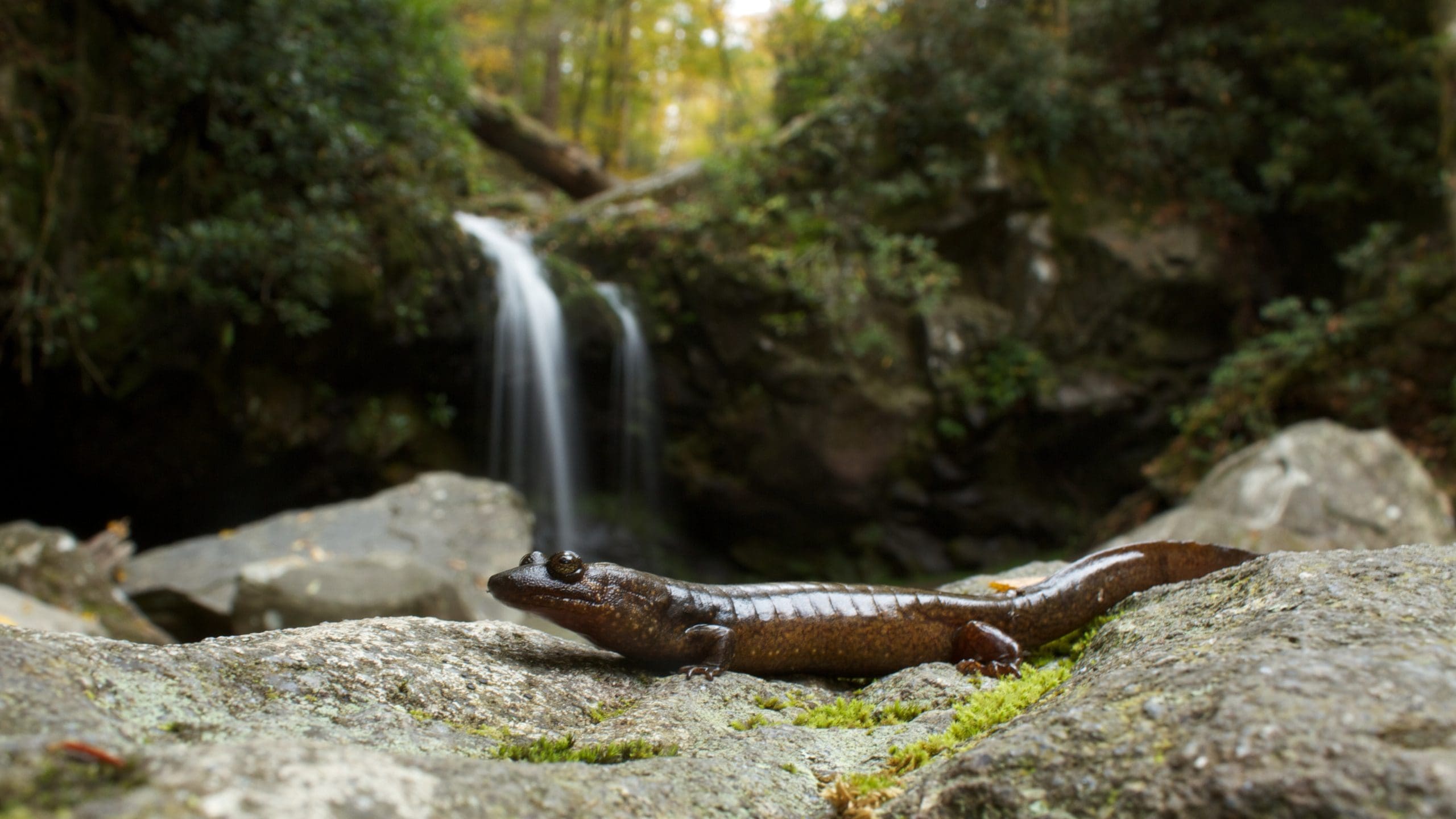Posted: May 28, 2023
Our Wildlife of the Week – 2023 Week 22…
Meet the “Black-bellied Salamander”!
(Desmognathus quadramaculatus)
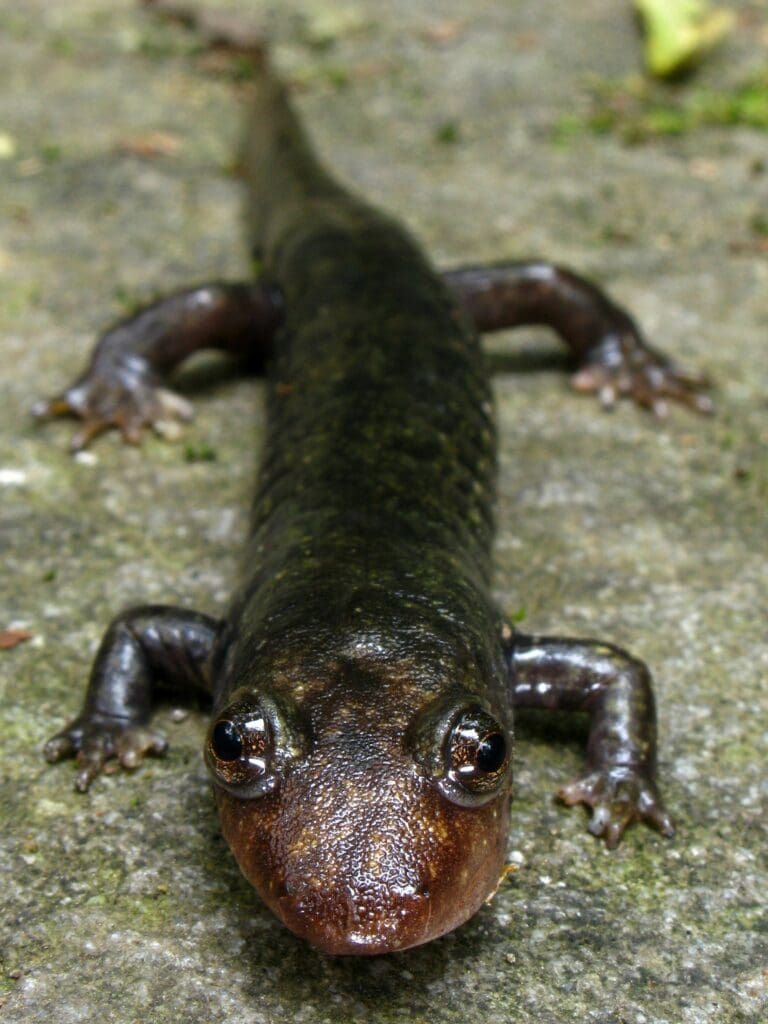
Table of Contents
Black-bellied Salamander Physical Description
Black-bellied Salamanders are thick-bodied, with a short curled tail. They are the largest species in the genus Desmognathus. Their tail is strongly keeled and they have 14 costal grooves. These salamanders can be mostly black, gray, or brown with a black belly and lateral white spots going down the body. They have short, sharp, black toes. Occasionally, some will have a vertical red stripe along the tail.1
In some parts of Tennessee, some Black-bellied Salamanders can have a brownish tint with black along the body. The older males tend to be blacker with larger features like premaxillary teeth and a more defined cloacal lips. Both adults males’ and females’ SVL (snout-vent lengths) are typically 75-80 mm (maximum 120 mm SVL) and total lengths can range between 90-210 mm. Males typically are larger than females, by a factor of 15%.1
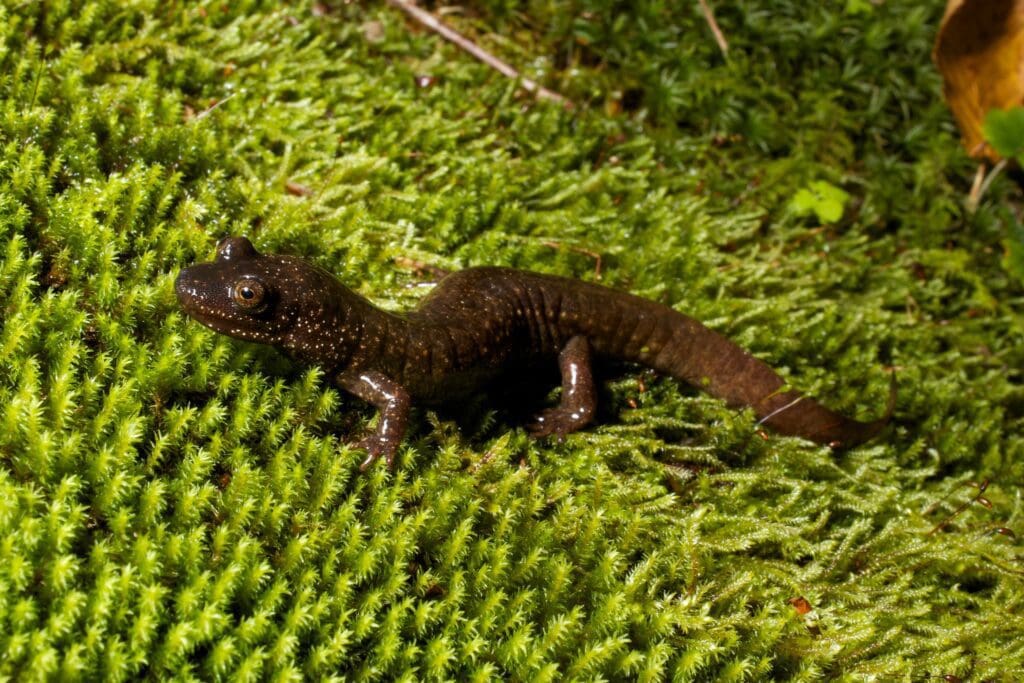
The hatchlings’ color is typically brown and they possess up to eight white spots between their limbs. The length ranges from 11 to 16 mm. As age increases, white external gills will become darker. Young juveniles have bellies that are white in pigmentation, and within months they will change to black.1
Black-bellied Salamanders’ first stage of life is a fertilized egg that hatches in a 1 to 4 month period between May and September. These salamanders remain in their larval stage for 12 (lower elevations in Tennessee) to 60 (higher elevations in West Virginia) months after which they undergo metamorphosis. At this stage they are about 34 to 54 mm in length. The range for time to metamorphosis is likely linked to growth rate and climate conditions; individuals at higher elevations were larger and remained in the larval stage for a longer time period. Like all species of salamanders, they likely exhibit indeterminate growth.1
SPONSORED ADVERTISEMENT
Black-bellied Salamander In Action
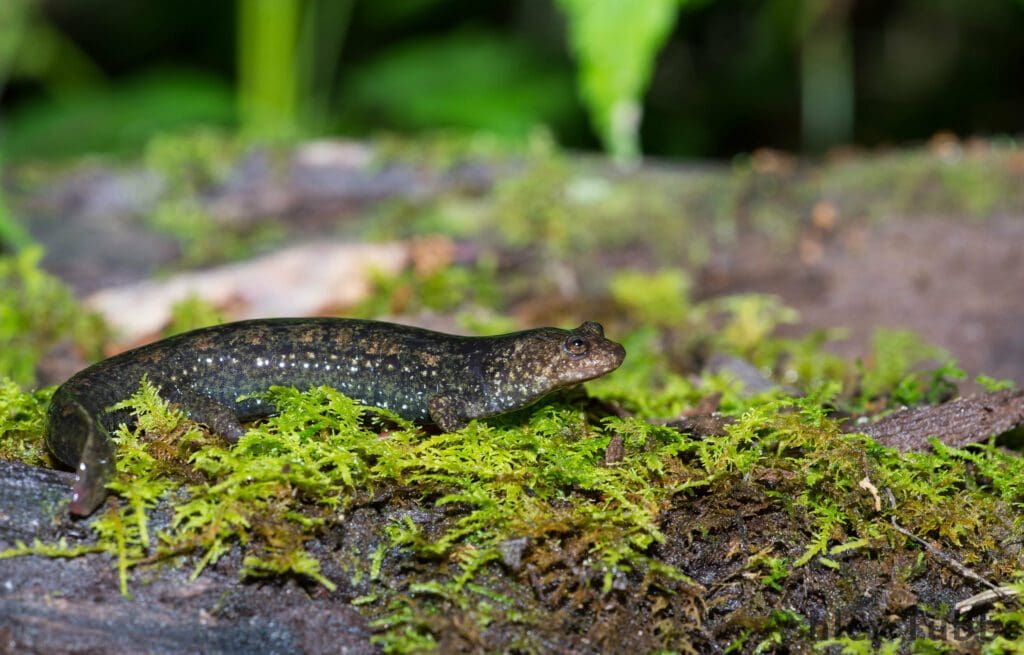
Black-bellied Salamanders are most active during warmer months, but can be active year-round if temperatures are mild. Black-bellied Salamanders are nocturnal as juveniles, but can be diurnal as adults. They are thought to be one of the most aquatic of all members of the genus Desmognathus. They forage in their creeks or on the riverbanks. They are very territorial over their refugia, and have been known to fight with members of their own species, as well as predators. These refugia are located in the dirt or in between rocks, and they often use a single refugia or rotate around one primary and few secondary refugia. In the water, they frequently dig and sit-and-wait in their refugia to attack prey.1
SPONSORED ADVERTISEMENT
Where to Spot Black-bellied Salamander
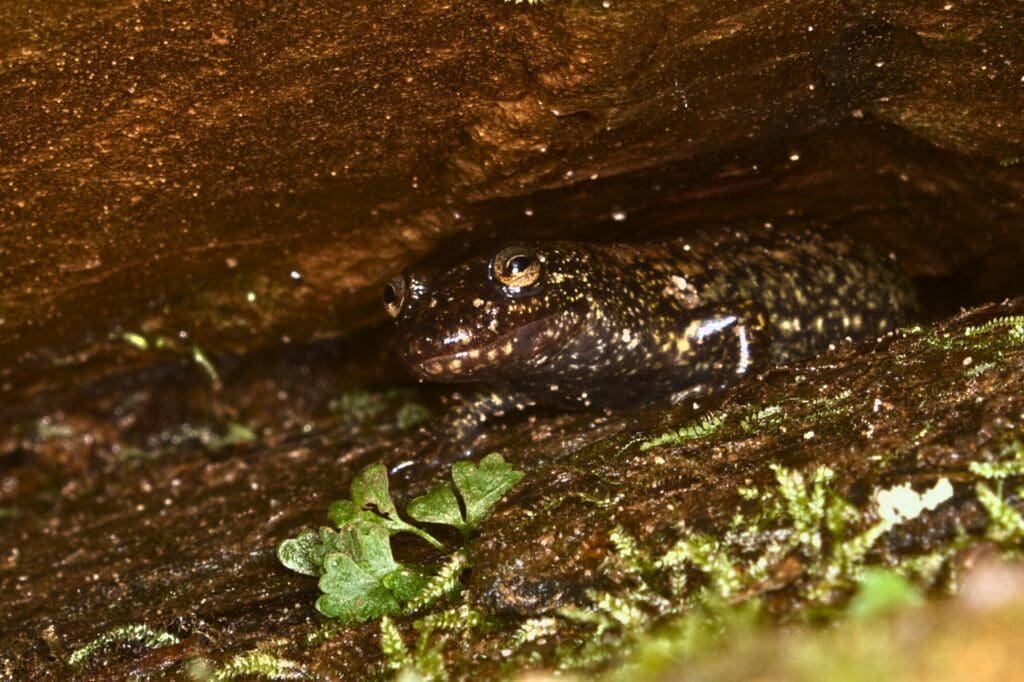
Black-bellied Salamander habitat consists of rivers and streams with waterfalls and swift currents (although no current speed has been published). They burrow under rocks into the soil if the current is too harsh, or if hiding from larger predators.They also use rocks on the edge of rivers and rocks exposed to the sun for basking.1
Juveniles tend to stay in fast-moving riffles of the streams. Adults burrow between pebbles and soil to ambush their prey. The elevational range at which these salamanders are found is between 460 to 1676 meters. These salamanders are commonly found in cooler freshwater temperatures, 10- 17.7 degrees C. The depths at which they forage are not known, although all ages are known to inhabit the stream beds.1
Black-bellied Salamanders are found in mountainous regions in southern West Virginia and southwestern Virginia, with a range continuing southward to eastern Tennessee (south of the Tennessee Valley divide) and western North Carolina to northern Georgia. This includes the far western portion of South Carolina. They have been introduced into additional locations in Georgia and South Carolina due to their use as fish bait.1
The Black-bellied Salamander can be found in over 2 National Parks and many other National Park Service sites.2 Including:
SPONSORED ADVERTISEMENT
Black-bellied Salamander Conservation Status
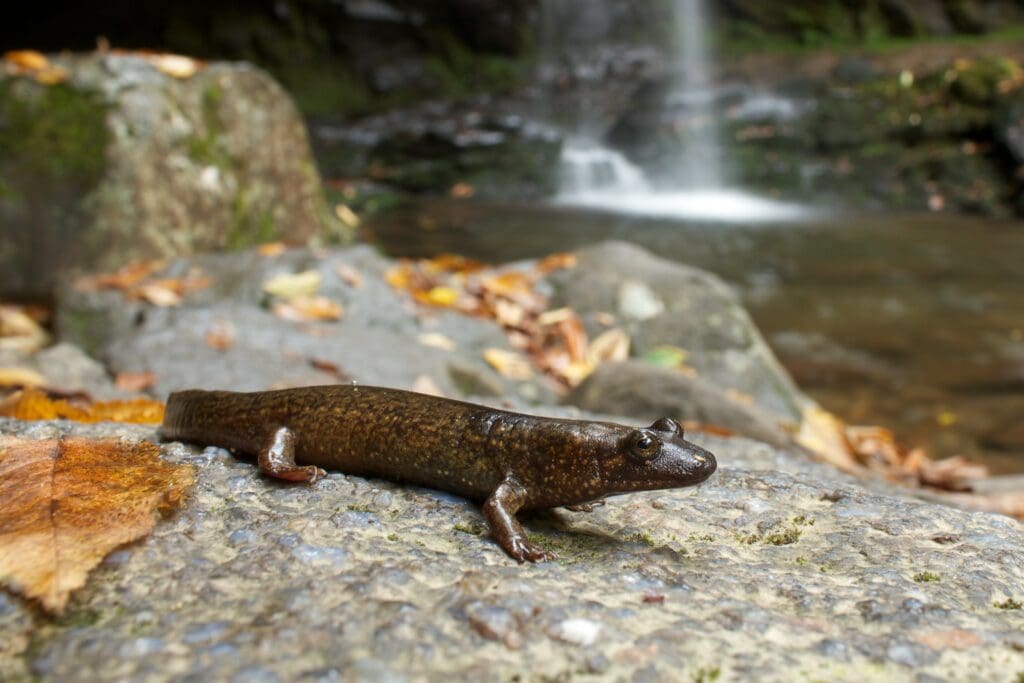
Black-bellied Salamanders are listed as a species of “Least Concern” on the IUCN (The International Union for Conservation of Nature) Red List. Populations across the geographic range are stable but some populations could be threatened locally by their use as fishing bait. Their populations can also decline from pollution of streams near mining areas as acidification is often a concern. Jensen reports the use of commercial bleach to drive salamanders from their refugia.1
Black-bellied Salamanders have no special status on the US Federal list, CITES (the Convention on International Trade in Endangered Species of Wild Fauna and Flora), and State of Michigan lists. Due to their limited range, they are listed as a Species of Concern in West Virginia. As a relatively common species elsewhere in their range, no conservation efforts are in place.1
Black-bellied Salamander and You
Have you seen a Black-bellied Salamander in it’s natural environment? Tell us about it in the comments below!
Do you have a picture of these amazing creatures? Share it on social media with us and tag us in your post.
Use the hashtag:
#WildlifeOfTheWeek.
Interested in Wildlife Photography???
Check out this amazing beginners guide from National Geographic:
National Geographic Photo Basics The Ultimate Beginner’s Guide to Great Photography
The above links are provided in this article as affiliate links. Meaning, at no additional cost to you, we’ll earn a commission if you click one and make a purchase. An easy way to help support us if you’re going to buy anyway!
Learn more about all the amazing wildlife in our National Parks and how to safely “Watch Wildlife” on this amazing page with lots of resources from the National Park Service!
Want tips for photographing wildlife? Check out this great article for tips from the National Park Service.
Help support Discover Our Parks by becoming a Patron for as little as $1 a month! Your support will help us continue to provide articles like this and add even more information about our parks to this site.
If you want to make a one-time donation, buy us a coffee!
‘We got some of the above information from the following:
1: Animal Diversity Web – Desmognathus quadramaculatus – Black-bellied Salamander
2: NPSpecies – Find Parks Where a Species is Found
Check out these recent posts from Discover Our Parks:
- The Isolated Black-bellied Salamander: Wildlife of the Week – 2023 Week 22
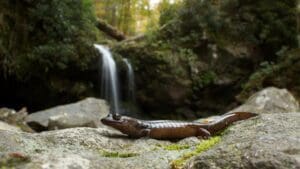
- The Splendid Sandhill Crane: Wildlife of the Week – 2023 Week 21
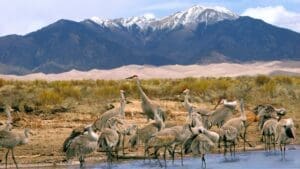
- The Promising Peregrine Falcon: Wildlife of the Week – 2023 Week 20
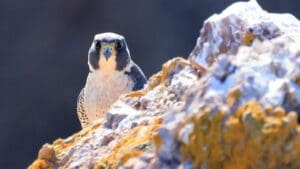
- The Intimidating Killer Whale: Wildlife of the Week – 2023 Week 19
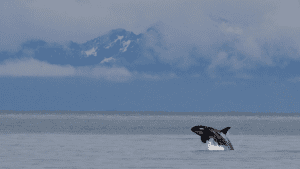
- The Swift Fox: Wildlife of the Week – 2023 Week 18
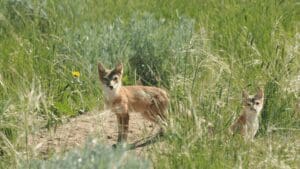
SPONSORED ADVERTISEMENT

